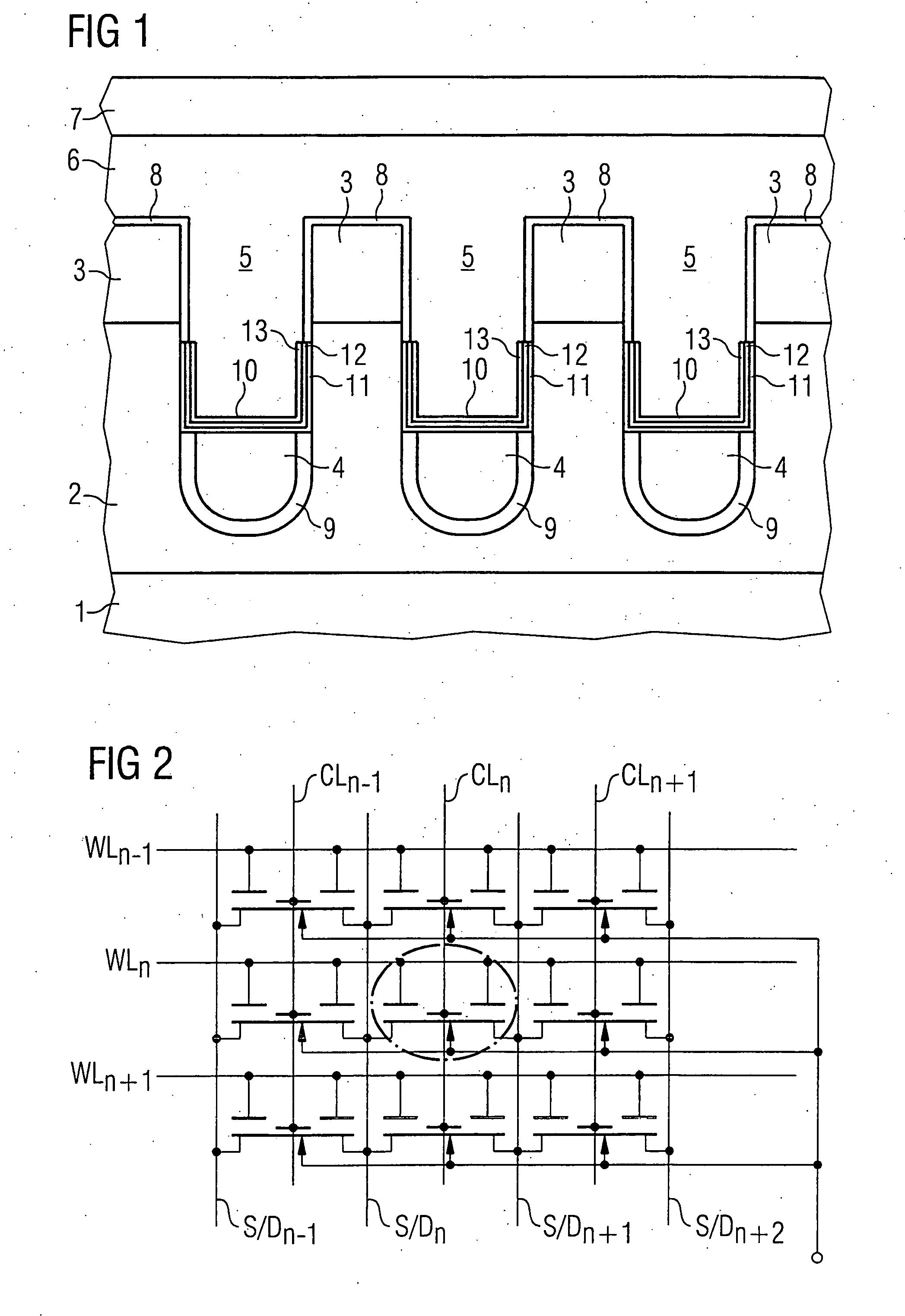Charge trapping memory cell and fabrication method
a memory cell and charge trapping technology, applied in the field of semiconductor device methods, can solve the problems of restricted storage medium, achieve the effects of weaker electric fields, small area, and improved programming and erasing properties
- Summary
- Abstract
- Description
- Claims
- Application Information
AI Technical Summary
Benefits of technology
Problems solved by technology
Method used
Image
Examples
Embodiment Construction
[0041]FIG. 1 shows a detail from a cross section through a memory cell array formed with the charge trapping memory cells. A doped well 2, preferably p-conducting, is fabricated in a semiconductor body 1, such as a substrate or a semiconductor layer grown on a substrate. Trenches are situated in the well, the transistor structures of the memory cells being formed in the trenches. At the top side of the semiconductor body 1, source / drain regions 3 doped opposite to the conductivity type of the well 2 are situated between the trenches and in a manner adjoining the latter. Situated in the lower region of the trenches are first gate electrodes 4, which are in each case insulated from the semiconductor material of the doped well 2 by a gate dielectric 9. The trenches are formed with curved bottoms, and the entire curved region is covered by the first gate electrodes 4. Second gate electrodes 5 are situated above the first gate electrodes 4 in the trenches. The first gate electrodes and t...
PUM
 Login to View More
Login to View More Abstract
Description
Claims
Application Information
 Login to View More
Login to View More - R&D
- Intellectual Property
- Life Sciences
- Materials
- Tech Scout
- Unparalleled Data Quality
- Higher Quality Content
- 60% Fewer Hallucinations
Browse by: Latest US Patents, China's latest patents, Technical Efficacy Thesaurus, Application Domain, Technology Topic, Popular Technical Reports.
© 2025 PatSnap. All rights reserved.Legal|Privacy policy|Modern Slavery Act Transparency Statement|Sitemap|About US| Contact US: help@patsnap.com



